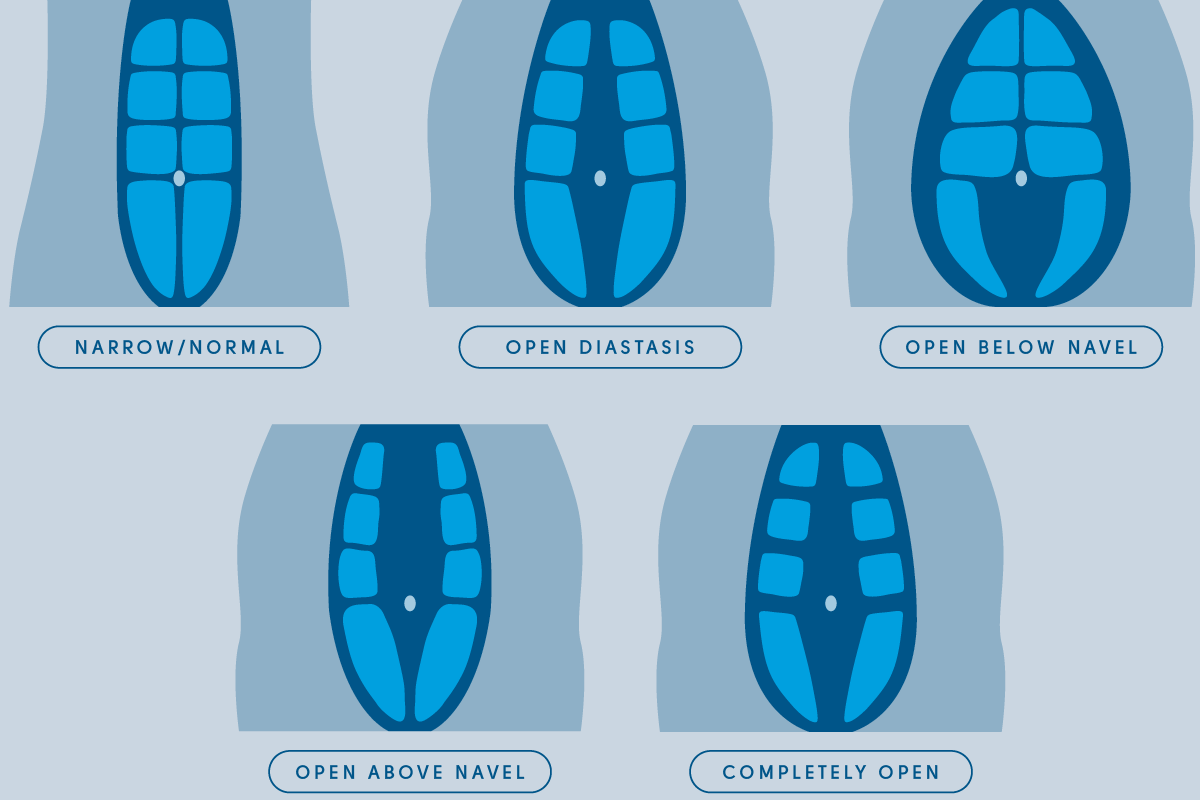Diastasis Rectus Abdominis (DRA)
By: MJ Fegan, PT, DPT, GCS —
Diastasis Rectus Abdominis (DRA) is a common occurrence during and following pregnancy. However, DRA is not limited to women who have had children. Anyone can develop DRA.
Have you noticed a feeling of “flabbiness” in the abdominal muscles, a soft pooch around the belly or can you actually feel a gap near your belly button? These may be signs of Diastasis Rectus Abdominis.
Diastasis Rectus Abdominis is the partial or complete separation of the rectus abdominis muscle. This muscle is also known as the “six-pack” muscle. The Rectus Abdominis has 2 sides of muscle that meet at the midline of your stomach and are attached by a thick connective tissue structure known as the Linea Alba. A separation of the 2 sides can occur when the Linea Alba is weak and becomes overstretched. So, it makes sense that DRA can occur with pregnancy since the abdominal muscles are significantly stretched as a baby grows in the womb. DRA can also result from increased stress on the abdominal muscles such as lifting heavy weights, performing excessive abdominal exercises or unsafe abdominal exercises.

The most common symptom of diastasis recti is a pooch or bulge in your stomach, especially when you contract your abdominal muscles. Additional symptoms include:
- Pelvic-floor muscle dysfunction (leakage, constipation, bloating, pain with sex, etc.)
- Low back, pelvic or hip pain
- Feeling weak through the midsection
- Poor posture
In more severe cases, the tissue may tear, and organs may protrude out of the opening (hernia). If you have a DRA:
- Avoid lifting or carrying heavy loads
- Avoid straining your abdominal muscles
- Practice good posture
- Support your lower back with a towel or pillow when sitting
- Bend your knees, roll, and support yourself with your arm when getting in or out of bed, or standing up off the floor
- Avoid crunches, sit ups, and planks
- Avoid coughing without supporting your ab muscles
If you have a DRA, it’s best to seek treatment early to minimize and prevent the development of symptoms. Consult a physical therapist who is experienced in treating this condition.
At Rehab Concepts Physical Therapy, we can recommend exercises to help improve diastasis rectus abdominis and provide you with the tools you need to reduce or eliminate DRA symptoms. So, give your physical therapist a call as soon as possible, especially following childbirth.


